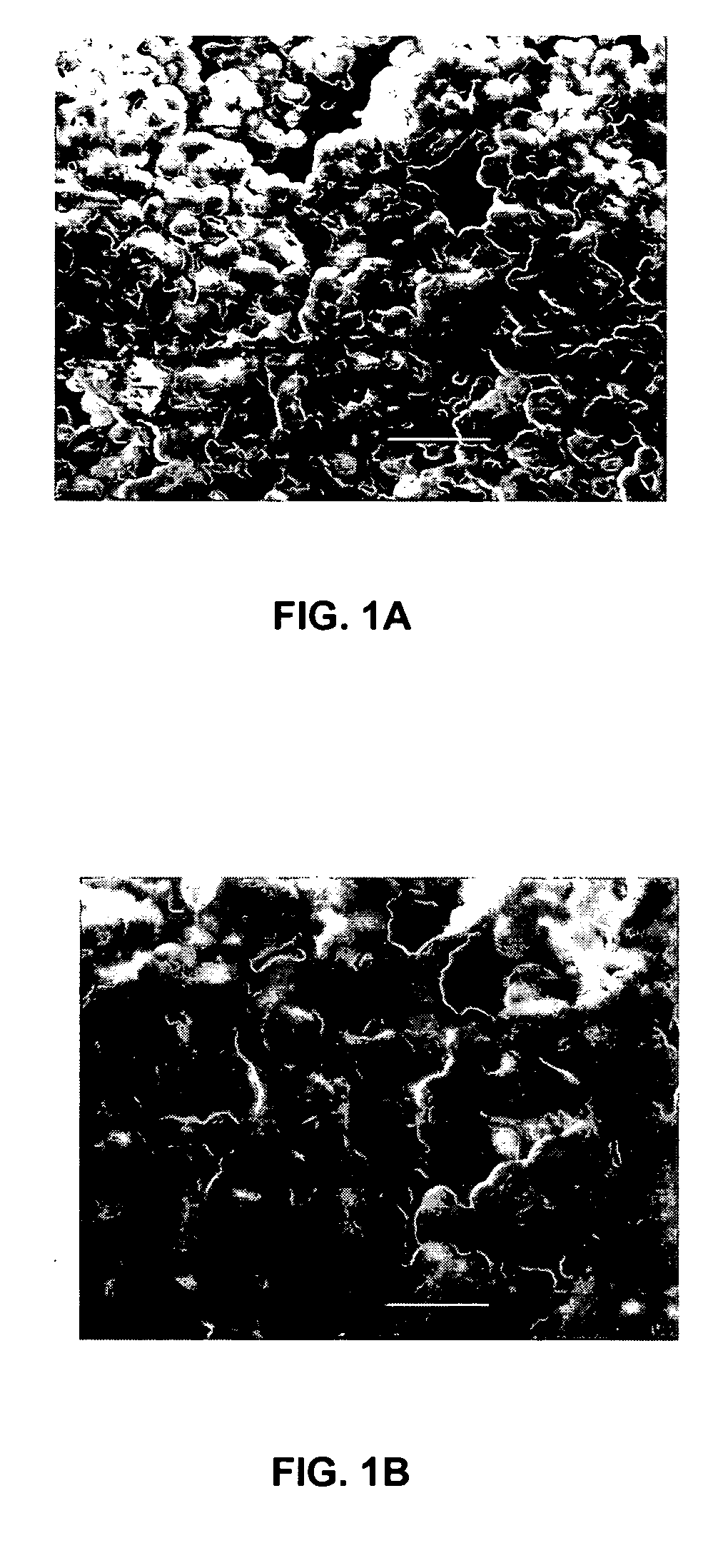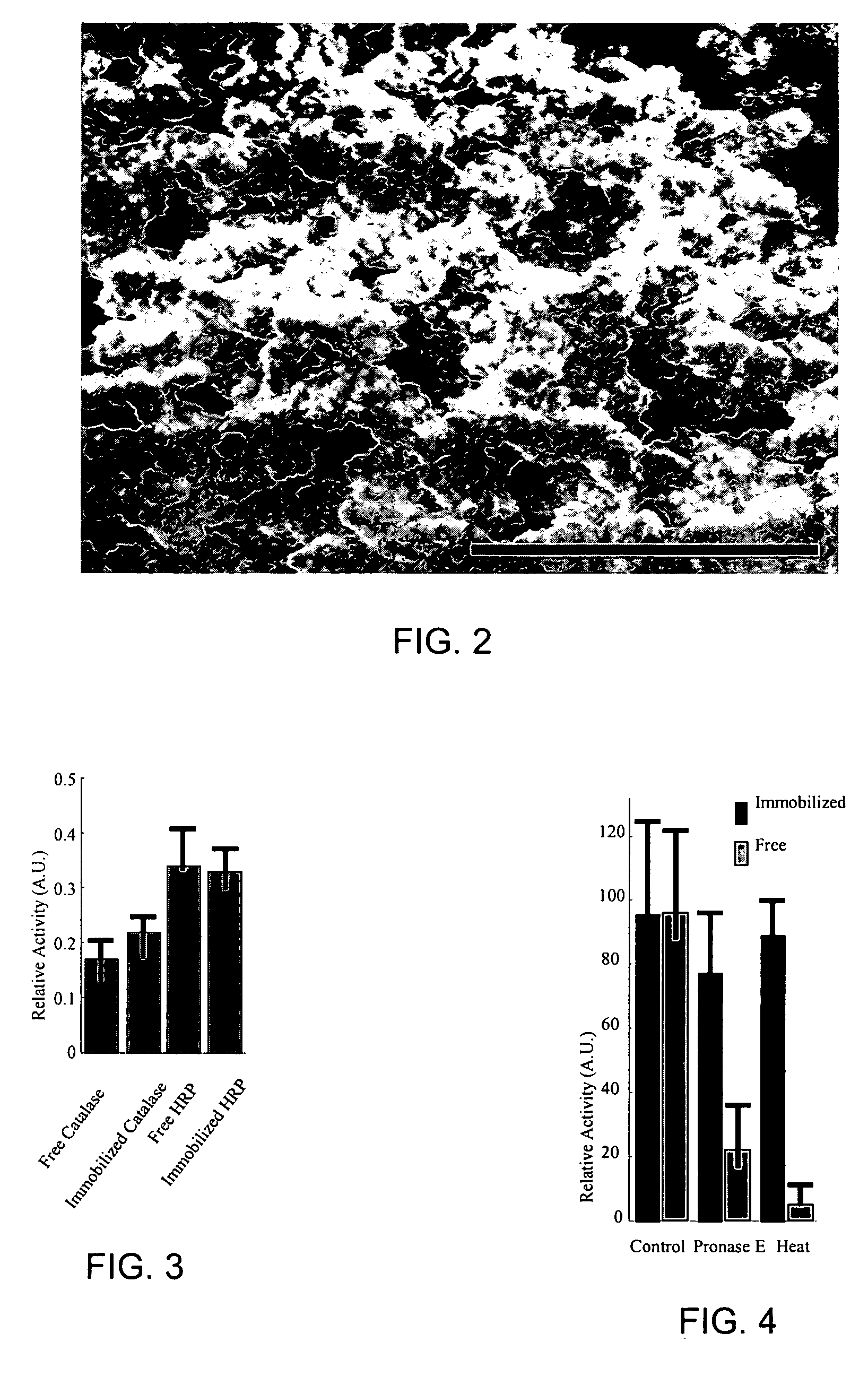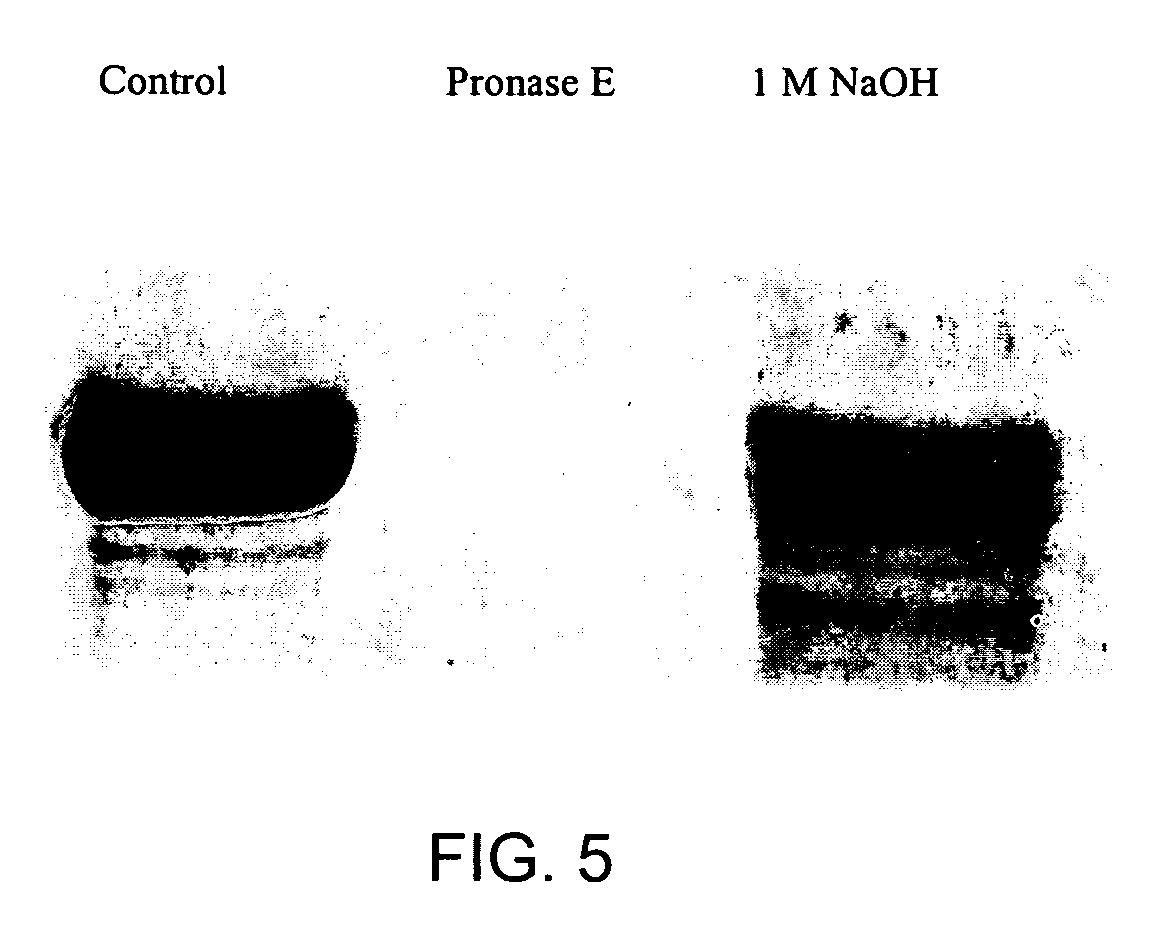Entrapment of biomolecules and inorganic nanoparticles by biosilicification
a biomolecule and inorganic nanoparticle technology, applied in the field of biochemical approach for encapsulating, immobilizing or entrapment of biological or non-biological materials, can solve the problems of reducing the stability of biomolecules, and reducing the activity of biomolecules
- Summary
- Abstract
- Description
- Claims
- Application Information
AI Technical Summary
Benefits of technology
Problems solved by technology
Method used
Image
Examples
example 1
Enzyme and Reagents
[0035] Butyrylcholinesterase (EC 3.1.1.8) was obtained from Sigma-Aldrich Co. (St. Louis, Mo.) as a highly purified lyophilized powder from equine serum containing approximately 50% protein and activity of 1200 units per mg protein. Enzyme stock solutions of the butyrylcholinesterase were prepared by dissolving the lyophilized enzyme in a cholinesterase specific buffer (0.1 N NaOH, 0.1 M KH2PO4, pH 8). The stock solutions were divided into aliquots of 50 U / ml based on the nominal units of activity as designated by the manufacturer. Catalase and HRP were also obtained from Sigma-Aldrich Co. Stock solutions of each of the catalase and HRP were prepared by dissolving the lyophilized enzyme in sodium phosphate buffer (pH 7.5) at a concentration of 10 mg / ml.
[0036] The R5 peptide was obtained from New England Peptide, Inc. (Gardner, MA) and a 100 mg / ml stock solution of the R5 peptide was prepared in deionized water. All other chemicals were of analytical grade and we...
example 2
Preparation of Biosilicification Products
[0037] Biosilicification products were synthesized using the R5 peptide stock and silicic acid in the presence of the enzyme (butyrylcholinesterase, HRP, or catalase) to be immobilized. The silica matrix was prepared and the enzyme immobilized in a one-pot procedure.
[0038] To immobilize butyrylcholinesterase in the silica matrix, a biosilicification reaction mixture that included 80 μl of butyrylcholinesterase stock solution (3.5 μg protein), 10 μl of silicic acid (hydrolyzed TMOS) at a final concentration of 1.0 mg / ml, and 10 μl of the R5 peptide stock was prepared. The R5 peptide stock was added to a mixture of the butyrylcholinesterase stock solution and the silicic acid. The biosilicification reaction mixture was agitated for 5 minutes at room temperature (approximately 25° C.). The R5 peptide condensed the silicic acid, catalyzing the precipitation of silica within seconds. The precipitated silica particles were removed by centrifugati...
example 3
Activity of the Immobilized Butyrylcholinesterase Product
[0043] The suitability of the silica matrix as an immobilization matrix for butyrylcholinesterase was determined with the immobilized butyrylcholinesterase product described in Example 2. To determine whether the butyrylcholinesterase retained its activity after the immobilization reaction, the activity of the butyrylcholinesterase entrapped in the silica matrix was compared with the activity of the free enzyme. Butyrylcholinesterase activity was measured spectrophotometrically at 630 nm using indophenyl acetate (2×10−4 M) as the substrate and a cholinesterase specific buffer (0.1 N NaOH, 0.1 M KH2PO4, pH 8). At pH 8.0, cholinesterases hydrolyze the yellow indophenyl acetate to a blue reaction product (4-(4-hydroxy-phenylimino)-cyclohexa-2,5-dienone). The absorptivity of the product was determined to be 8.1×10−3 M−1 cm−1 based on assumption of complete conversion by butyrylcholinesterase. Silica particles were removed by cent...
PUM
| Property | Measurement | Unit |
|---|---|---|
| temperature | aaaaa | aaaaa |
| temperature | aaaaa | aaaaa |
| diameter | aaaaa | aaaaa |
Abstract
Description
Claims
Application Information
 Login to View More
Login to View More - R&D
- Intellectual Property
- Life Sciences
- Materials
- Tech Scout
- Unparalleled Data Quality
- Higher Quality Content
- 60% Fewer Hallucinations
Browse by: Latest US Patents, China's latest patents, Technical Efficacy Thesaurus, Application Domain, Technology Topic, Popular Technical Reports.
© 2025 PatSnap. All rights reserved.Legal|Privacy policy|Modern Slavery Act Transparency Statement|Sitemap|About US| Contact US: help@patsnap.com



